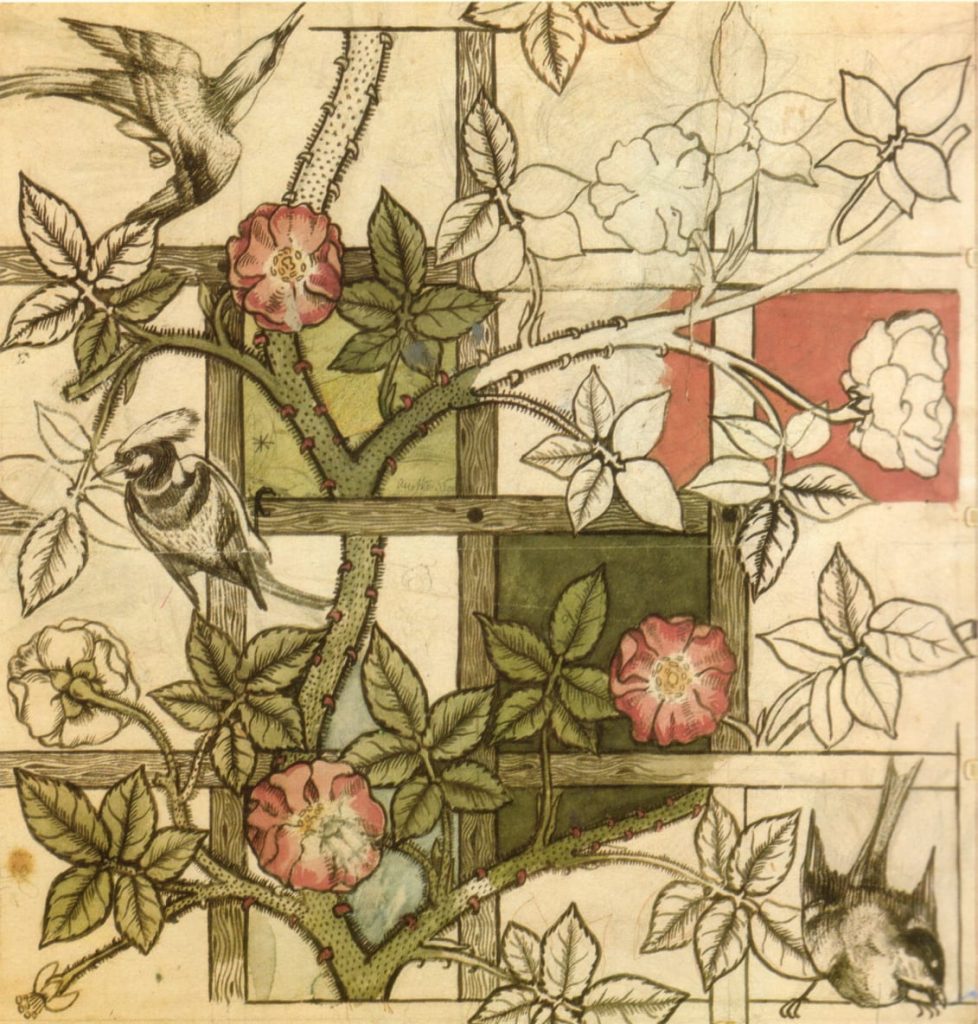by Peter Smith, undergraduate, School of History and Heritage
In 1998, the Bowler family moved into a nineteenth-century terraced house and for three months lived as though they were Victorians in their temporary home. The resulting Channel 4 series, The 1900 House, was a critical and popular success. Since then, the ‘back in time’ series has been a staple of television schedules – from farms to pharmacies and shops to schools.
The latest of these programmes – The Victorian House of Arts and Crafts – has just concluded a four-week run on BBC 2. This series has a particular resonance with Lincoln and its students as one of the participants is Ilsa Parry, Senior Lecturer in the College of Art and Design and an ‘Award-winning design consultant, specialising in all things creative with a digital focus’.
The premise of the programme was that six 21stCentury ‘crafters’ (a curiously amateur term for people with an impressive array of professional design and craft skills) would be ‘transported back into a remote Victorian Arts and Crafts bubble, cut off from 21st century life, to breathe life back into an original Arts and Crafts property’.

For each of the four weeks that the six lived together in Wyndcliffe Court they were charged with renovating a different room. Renovations included making objects chosen for them by the presenters and using the tools, methods, materials and, most importantly, the ethos of the Arts and Crafts Movement. The collective approach – sharing tasks and ideas, collaborating on projects and in daily chores – was integral to the late-Victorian movement, pioneered by designers and artists like William Morris, John Ruskin and William de Morgan, as a response to industrialisation. Morris and his contemporaries believed that mass-production meant that workers were exploited and the goods they produced lost style and quality. A return to hand-made, craft-based artisan production and a respect for nature would, they believed, enhance the lives of all people and help to create a better society.

The challenge to Ilsa Parry and her five fellow crafters – a woodworker, a silversmith, a metalworker, an embroiderer and a potter – was to live communally and to see if Arts and Crafts principles could inform 21stCentury work.
In just four one-hour shows, a month of collective life inevitably gets condensed and there was in all honesty not much in the series that a keen student of Victorian/ Edwardian culture would have found new or engaging. However, it was visually impressive and no doubt viewers with little knowledge of the period would have found the art and artefacts fascinating.
The politics of Morris’s creed was mentioned in the introduction to each episode, there were even some still pictures of his socialist publications and the left-wing groups that he and his supporters belonged to, but there was hardly any reference in the actual coverage of the design and production the crafters undertook.

Indeed, it seemed from the edited package that we saw that the challenge of adapting to 19thCentury ways of working – few power tools, reliance on hand crafts, at the mercy of natural light or poor indoor lighting – was quickly overcome by the crafters; but the communal, integrated working style appeared to be more difficult to negotiate. Not being party to the many hours of filming that was sacrificed to the edit, we cannot be sure if the social disputes shown were typical or left in to give the audiences some tension and conflict to enjoy. By the end, however, each of the team was immersed in the ethos and working with colleagues and across disciplines, but it clearly was not easy.
There was a competitive element – again presumably to engage the non-expert audience – that did not sit with that collective-collaborative principle either. For each week a ‘design of the week’ was chosen by the presenters (one being Keith Byrmer Jones, last seen on the Great Pottery Throw-Down), a judging system used in other BBC craft shows but not entirely in keeping with Arts and Crafts philosophy. But we should not complain about that too much perhaps, as our very own Ilsa won two of the four competitions – on her own in week one for a Morris-inspired wallpaper and in the final week as part of a two-woman team that designed and built an iron weather vane.
Edited by Amber Coombs
